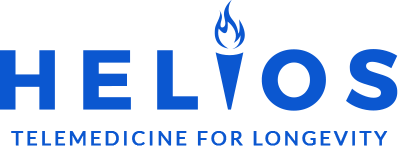Introduction To Primary Testosterone Deficiency
In the normal male, the testosterone levels in the blood are highest in the morning and fall through the day as a part of our circadian rhythm so, when I think of treating primary testosterone deficiency, I break it into two classes: physiological and non- physiological therapies depending on whether the treatment preserves this pattern or it overwrites it. I divide the non-physiological category into short- and long acting- therapies.
Physiological Therapies
In physiological regimens, we give a dose of testosterone every morning. The delivery methods in this class include transdermal creams, gels, or patches that are placed on the skin and oral tablets that are swallowed. The transdermal creams and gels must be applied in the morning and allowed to dry before dressing. They must stay on for at least a couple of hours before being washed off, and must be completely washed off before coming into skin-to-skin contact with women or children. Patches are applied and left on for hours before being removed. While these methods work for many men, most find them inconvenient and eventually elect to go a different route.
The short-acting non-physiologic class of therapies include sublingual troches or buccal patches that are placed in the mouth and a gel that is sprayed into the nose. They sound a lot like the physiological therapies, but because they are applied multiple times a day they maintain the testosterone closer to the morning level throughout the day so I cannot put them into the category above.
Non-Physiological Therapies
The long-acting non-physiological class includes injections of testosterone suspensions and insertion of testosterone pellets. In both cases, treatment completely suppresses the hypothalamus-pituitary-testes axis overwriting the circadian rhythm.
Injections
Injections can be Intramuscular (IM) or subcutaneous (SQ). The SQ route is more common in Europe than in the US, but both are valid and effective therapies. The half- life of the injected testosterone in the blood is about 10-11 days with each dose. Dosage schedules vary between weekly and tri-weekly in frequency. Personally, I prefer the weekly schedule as it results in peaks and valleys that remain in the therapeutic range rather than going supra-therapeutic for the first week and sub-therapeutic before the next dose. Because the next dose is given before the prior one is gone, the overall levels will taper up over 4-5 doses. Testosterone levels can be measured and dosages can be adjusted based on the trough levels just prior to the 5th dose.
Testosterone Pellets
Testosterone powder can be compressed into pellets that are about the size of a grain of rice. They can be inserted into the fat just below the skin in a simple procedure. The initial dose is usually calculated based on knowing the clinically effective intramuscularly injected dosage. It can be adjusted by changing the number of pellets inserted. The pellets usually take between 3-6 months to dissolve, so repeat pellet insertions can be done at 3-6 month intervals. This is a great therapy for those who will be away from medical care for long periods of time or those who just want to have one-and-done treatments every few months. Some people, however, dissolve them faster than expected resulting in high initial levels then low levels in the last month. Others may dissolve them more slowly and may never reach a therapeutic level with the first insertion. They may then reach supra-therapeutic levels with the following one. For those, the injection route may be more appropriate.
Summary
There are no therapies without consequences so we will talk about the side effects and complications of testosterone replacement therapy next week. In the meantime check out our prior videos, take a complimentary self-evaluation questionnaire, or make an appointment with me.

